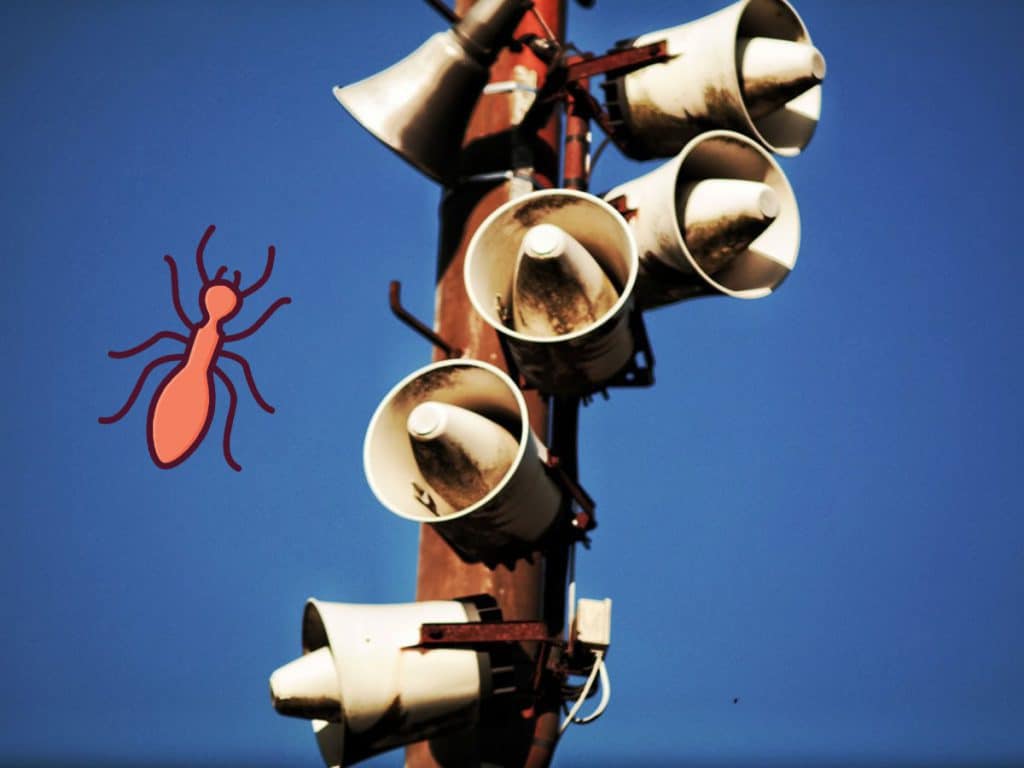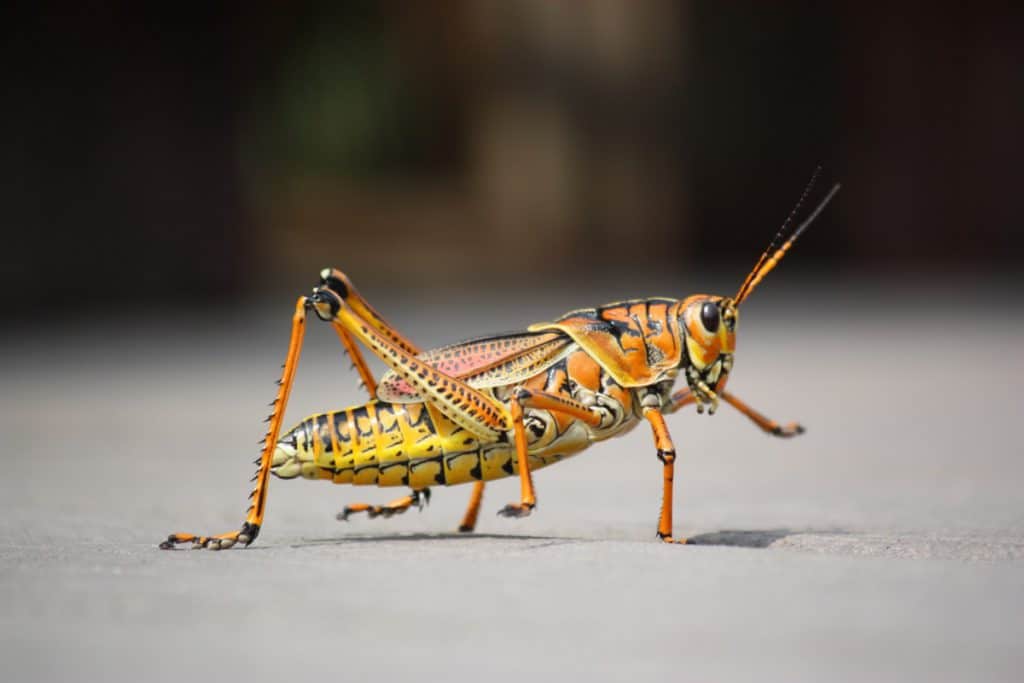
If you enjoy reading this article, why not check out our articles on Are Spiders Insects or Bugs: The Simple Answer and Do Male Spiders Spin Webs? Not What You Expected
Do insects have ears?
Sound is simply vibrations that are carried throughout the air. By definition, most animals can hear or have some way of detecting and interpreting those vibrations. Additionally, most animals have ears that are used for this function. However, when it comes to insects, they don’t appear to have an ear structure or function.
How exactly do insects hear?
The short answer is that most insects have at least one sensory organ that they use to detect vibrations present in the air.
In fact, not all insects have these organs but the ones that do are usually more sensitive than other animals to sound. Insects have to have this sense in order to communicate with other insects as well as to navigate their environment. Some insects even listen to the sound of predators in order to avoid being caught and eaten.
Types of Auditory Organs
Not all insects have the same sensory organ that is used to hear. In fact, there are 10 types of auditory organs. Insects may possess none, one, or more of these organs to hear.
- Tympanal Organ
Many of the hearing organs have a pair of tympanal organs. These are organs that vibrate when they catch sound waves. Their name hints at their function: they actually function by catching the sound and vibrating in a way that is similar to a drum. This is why they’re called tympani, after the large drum that’s used in an orchestra. Like the drum, a tympanal organ is a membrane that is stretched tightly on a frame with an air-filled space. When sound enters the tympanal organ, it vibrates which then produces that sound. Many insects hear using their tympanal organs, which is similar to how humans and other animals hear.
What makes the insects slightly different is their receptors known as chordotonal organs. These work to sense the vibrations of the tympanal organ and then translates that sound into a nerve impulse. Insects that hear in this way include crickets, cicadas, grasshoppers, butterflies, and some moths.
2. Johnston’s Organ
This is not actually an organ but actually a group of sensory cells. They are present on the antennae and form a receptor that is known as Johnston’s organ. It works to collect auditory information. This group of cells is found on the part of the antennae known as the pedicel, the second segment. It works by detecting the vibrations of the segments above it.
Mosquitoes and fruit flies are two insects that hear in this way. For fruit flies, the organ is primarily used to hear the frequency of wing beating for potential mates and detect hawk moths. It’s also how bees hear and is thought that it may help them with a flight.
Johnston’s organ is not found in any other invertebrates other than insects. It was named for the physician, a professor of surgery, who first discovered this organ.
3. Setae
This type of hearing is primarily used by larvae and not usually the adult insect. Butterfly and grasshopper larvae have small stiff hairs known as setae. They can be used to sense sound vibrations. It’s often easy to see that caterpillars can respond well to vibrations by exhibiting behaviors that are a defense. Some of them may stop moving while others may rear into a “fighting” position. Setae hairs can be found on other types of species but not all of them use those organs to sense sound. Curious about other senses butterflies may have? Take a look at Can Butterflies See Color? to find out more.
4. Labral Pilifer
This is a structure that’s actually present in the mouths of certain types of hawk moths. It enables them to hear ultrasonic sounds. This is a type of sound made by bats and is believed to only sense vibrations that occur at a specific frequency. Scientists have noticed that the movement of an insect’s tongue will change due to particular frequencies of sound. A hawk moth in flight can use this organ to detect bats in the area and it may help them avoid predators.
Ear Locations

Although it wouldn’t always seem like the location of ears for insects doesn’t make a significant difference. However, it not only distinguishes differences, but the location also changes the function of their ears. There are ears on antennae, legs, wings, and necks. With moths and butterflies, the ears will crop up almost anywhere. Additionally, some insects have an abundance of ears while some, such as the praying mantis, have only one.
While the location of insect ears may seem a little unusual, it’s actually anticipated that the starting point of each ear was a sensory organ. As insects have changed throughout history, they adapted to develop ears that were specifically designed to help them survive. Additionally, while some ears are fairly simple structures, some have a variety of bells and whistles. For example, the parasitic fly has ears on its neck and are too close together in order to pinpoint their target very well. However, they have an elastic band that connects the eardrums, allowing them to find their desired location.
How Do Insects Make Sounds?
For anyone who has ever wondered about insects and their hearing abilities, the question also arises about how they produce sound. For anyone who’s ever sat outside on a summer night, the cicadas and crickets can actually be incredibly loud. However, the sounds that insects make varies widely depending on the insect and time of the year.
Reasons to make sound
Insects make sounds for a variety of reasons. They may use it as a type of defense when trying to startle or warn a potential attacker. They can also use it to appear similar to potential predators, keeping themselves byways of disguise. Finally, they will use sound in order to communicate with members of their own species. Mating is one of the reasons why insects may communicate within their own species.
What insects make sounds at night?
Insects can make sounds in five different ways. The most well-known method would have to be stridulation. This is when an insect rubs one body part against another. This is how crickets, grasshoppers, some beetles, and even certain types of spiders make noise. The different parts of the insect are involved in different species of insects. For example, the two wings may be scraped together or the two legs may be used to produce a unique sound. Some insects use their mouthparts rubbing together to produce sound. The “songs” that some insects produce are primarily made by the male member of the species. They are designed to serve as a mating call or warn of potential competing males.
Want to know more about what bugs do at night? Read Are Ants Active at Night? for more info.
How do moths make sound
Some moths can stridulate as well. It was found out that certain types of moths are able to escape bats by making evasive maneuvers when they hear the approaching bat.
Later, scientists studied these moths and found that not only can the hawk moth avoid bats but they can actually jam the sonar with ultrasonic clicks that they produce. The moths work by creating types of a sound blanket and the bats can’t sense them clearly in the middle of the noise.
A less dramatic type of sound can be made by tapping a body part against a substrate. For example, some types of grasshoppers produce noise by tapping their feet.
Cockroaches tap their feet on their abdomen to make noise and some types of beetles bang hands to produce noise. But flies bees use their flight muscles or wings to create a buzzing noise. This is incredibly important for some types of bees as they use the buzzing to release pollen. This serves a different function than an angry buzz that they can also make.
The male cicada has a special organ that’s located in the first part of their abdomen. This hard structure vibrates with the help of strong muscles, producing a clicking noise.
The membranes moderate both the type of sound and the volume in order to attract a mate. It’s even been found that each species of cicada has a distinctive sound.
The final means of producing sound for insects is ejecting either fluid or air from the body. Some beetles eject a hot fluid that will vaporize in the air. This produces a popping sound and is used as a defense mechanism. However, this type of sound production is relatively rare in insects. The creating of sound by ejecting air is best seen in the hawk moth. They make either whistles or loud squeaks through sounds on the side of their necks. These openings are a part of their respiratory system and can be used to create sounds of different pitches and volumes.
Like previously mentioned, this whistling is used to protect the hawk moth from predators. Foraging birds are often startled by the whistling noise and will avoid or move away from the moths. Some caterpillars can also mimic the alarm of certain birds which keeps them away.
Finally, keep in mind that while all of these methods are used to produce audible sound, insects can produce a sound that is not audible for the average human ear.
Conclusion
When wondering how do insects hear, this overview provides basic information on the various ways that insects can detect sound. They have a few primary ways that are often unique but not well-known.
If you enjoyed reading this article, why not check out our articles on Do Tarantulas Like Being Stroked? Yes, Here’s Why and Should You Kill Spiders? Short Answer: No
Recent Posts
Tiny Black Bugs in Bathroom NO WINGS: What They Are and What to Do!
Finding tiny black bugs in your bathroom can be uncomfortable, to say the least. Especially if they are persistent, or they appear in very large numbers, which they often like to do. When it...
Tiny Black Bugs in Plant Soil - What Are They & What To Do About It
A short horror story: You get a new houseplant. You do your best to take care of it. You’ve ensured that it has the right soil, the right amount of sun, it gets enough water. And then one day, you...

